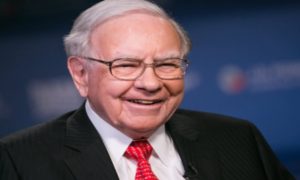Inside a dog daycare business in Seattle’s South Lake Union on Friday, a handful of pups were scurrying around and barking as if they knew something was changing in the neighborhood that Amazon calls home.
Also Read– Heineken Seals €1 Billion Share Buyback as Femsa Exit Begins
Amazon CEO Andy Jassy sent a company-wide email that morning with a new mandate: corporate and tech employees need to be in the office at least three days a week.
Shannon Rau, owner of the daycare, indoor dog park and human bar called Martha’s Garden, called it “great news” for her 2-year-old small business on 9th Avenue North in the heart of Amazonia adjacent to downtown Seattle.
“Our whole plan was kind of based on having the Amazon crowd here,” Rau said. “Hopefully this will really create a bit of change.”
Change has been rough over the past three years for businesses in Seattle and other urban centers across the country that rely on the steady drumbeat of worker foot traffic.
Also Read– The Average New Car Payment Sounds Like A Sick Joke
Whether it’s a pet-friendly bar or a restaurant or food truck or hair salon, the shift to remote and hybrid work models at companies such as Amazon, Google, Facebook and others has drastically impacted countless small business owners, including many that had to shut down.

On a grey, drizzly Friday in Seattle, lunchtime traffic on the streets around Amazon’s office was slow. Business owners in the area said the day has been especially difficult, as workers who are already splitting time between home and the office seem to be choosing midweek days to come in.
Ellie Galus, bar manager at Sam’s Tavern at 9th Avenue North and Harrison Street, said “yay!” when told of Amazon’s new plans, and added that it would be nice if more people were coming out to business lunches.
The bar/restaurant was less than half full on Friday with lunchtime diners. Pre-pandemic, every table would be full for lunch and happy hour was “insane,” Galus said.
Also Read– How to get an LLC loan
“We’ve been pretty good Tuesday through Thursday, but Mondays and Fridays are hard,” she said. “And I’m assuming that’s because people are not coming to the office on Mondays and Fridays. Friday days are killing us right now.”

Antonia Zamorano, owner of the Tacos El Tajin food truck, parks two trucks near Amazon five days a week. Like others, she said only three days a week are semi-busy.
“Three years ago was super busy,” Zamorano said. She used to get 150 customers per day at one truck. Now she’s down as low as 35 customers per day. To survive, she stopped paying herself and her children who work the business.
To make matters especially painful, her husband, Tomas Lopez, a beloved fixture in the food truck community, died of COVID at the start of the pandemic in April 2020. He was 44.
“It’s crazy,” Zamorano said. “The pandemic is too bad.”

Rau, the dog daycare owner, opened her space counting on the Amazon dogs and their owners that are part of the fabric of the neighborhood and office buildings nearby.
“Even the population of people that lives down here has really changed as well. If you go in these buildings, they’re just completely empty,” Rau said, gesturing at neighboring properties.
Also Read– Earned Income Tax Credit (EITC) refund schedule for 2022 & 2023
To add to the anxiety of running her own business during tough economic times, Rau said her partner was recently laid off by Amazon.
More than 2,300 Seattle-area Amazon employees were laid off among the company’s recent 18,000-person corporate workforce reduction, part of a wave of layoffs hitting tech companies.
The tech giant, which grew mightily during the pandemic with the acceleration of online shopping and cloud computing, employs around 75,000 people in the Seattle region, many of them corporate and tech workers.
“We’re really hoping to kind of get back and this should be taking it in the right direction,” Rau said of the decision by Amazon to shift from an existing policy leaving back-to-office decisions up to individual team leaders.

In his memo to employees on Friday, Amazon CEO Andy Jassy didn’t elaborate on any specific days that employees will be required to work in offices. He said the plan is to make the change effective starting May 1.
Jassy expressed hope that bringing back thousands of employees to office buildings in the Seattle region and at other urban headquarters locations will provide a boost to small businesses.
“Our communities matter to us, and where we can play a further role in helping them recover from the challenges of the last few years, we’re excited to do so,” Jassy wrote.
Amazon, the region’s largest employer, provided millions of dollars to local small businesses in the Seattle area during the pandemic, between its Neighborhood Small Business Relief Fund and additional rent relief.
Also Read- Pittsburgh police officer in need of kidney donation, bureau asking for help
The pandemic affected downtown centers across the country, and some are still struggling with the rise of hybrid work policies and ongoing safety concerns, among other trends.
Many companies in Seattle are ditching or downsizing their downtown space. Office building attendance in downtown Seattle this past November increased year-over-year from 15-20% to 35-60%, according to a report from CBRE. But only a “trickle” of tech tenants signed new leases downtown in the fourth quarter of last year, the report noted.

A recent analysis from the University of California Berkeley and University of Toronto ranked Seattle No. 27 in a list of 31 large cities measured by economic and social activity downtown compared to pre-pandemic levels.
The percentage of 2019 worker foot traffic in downtown Seattle compared to 2022 improved over the past year but is still hovering around 40%, according to data from Downtown Seattle Association.
The news of Amazon’s policy shift is “music to the ears of small businesses and arts organizations,” said DSA President and CEO Jon Scholes.
Also Read– More Ohio Kids Would Benefit from Continuous Coverage to Age 6
“We have the opportunity to use this great news to create a flywheel effect and attract more employees downtown and further efforts to strengthen the weekday foot traffic that is critical for the continued recovery of our small businesses, restaurants and arts & cultural venues,” Scholes said in a statement to GeekWire.
City leaders in nearby Bellevue, where Amazon has grown rapidly — but also recently paused construction on office towers to study the impact of hybrid work — were equally enthused. Joe Fain, CEO of the Bellevue Chamber, said the policy shift “will be a catalyst for stabilizing our commercial market while accelerating the return of retail, restaurants, and other commercial office tenants.”

A recent budget proposal from Seattle Mayor Bruce Harrell noted that “some workers are facing increasing pressure to be in the office on at least a part-time basis, but a return to a full-time, 5-day a week office presence seems unlikely for many.”
Speaking at the GeekWire Summit in October, Harrell said he was worried about the impact of people working at home on the city’s retail businesses and potential loss of tax revenue.
“I cannot mandate people to come downtown unless there’s something to drive them there,” he said.
Some establishments, including those right at the doorstep of Amazon’s largest office towers in Seattle’s Denny Triangle area, have seen steady activity.
Business at The Victor Tavern, an Ethan Stowell restaurant located across from The Spheres at 6th Avenue and Lenora Street, has been “incredible,” said Randy Deshaies, assistant general manager. Lunch is the busiest time of day, and happy hour is completely full, he said Friday.
But for a number of restaurants and other business across Amazonia — which is also home to large engineering office complexes for Google, Facebook and Apple — a boost is still needed.

Sayed Salem and Nasima Akhter, owners of the Spice on Curve Indian food truck, were among the business owners visited by GeekWire in October 2021, when Amazon announced a shift in its remote work policy.
Also Read– Chinese retirees take to streets over plan to cut health benefits
“How can we survive?” Salem said at the time, as he was down to 40 customers a day, from a peak of 250 to 300 customers a day before the pandemic.
Parked at the corner of Terry and Thomas streets on Friday, Spice on Curve has survived. Business is “starting to come up,” Salem said, adding that they’re attracting 60 to 70 customers a day now. But it hasn’t been easy.
“The city needs the working people,” he said. “This is my life.”











































